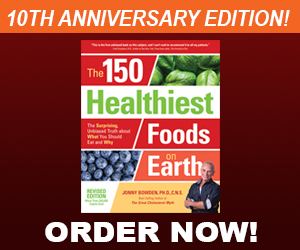It hasn’t been a great week for carnivores.
A new study found that an amino acid-like compound found in red meat transforms into a heart-disease causing chemical called TMAO, which, researchers now theorize, is probably the real reason red meat is bad for you.
The good news is that researchers are finally coming around to the idea that fat and cholesterol were not the problem after all.
The bad news is that the media is already gearing up to create a new scapegoat to replace them, that amino acid-like compound found in red meat called L-carnitine.
Get ready for the demon-swap, folks. Out goes cholesterol, in comes carnitine. The king is dead, long live the king.
Here’s what happened.
Researchers writing in the prestigious journal Nature Medicine have proposed a new mechanism which might account for the observed relationship between red-meat consumption and heart disease.
They start off by admitting that the prevailing theory—that saturated fat and cholesterol in meat have been the bad actors—has just not held up, citing a recent meta-analysis that found zero relationship between saturated fat consumption and heart disease.
(There are actually two such meta-analyses, both of which found saturated fat innocent, but, hey, we’ll take what we can get!
They write…
“In fact, the suspicion that the cholesterol and saturated fat content of red meat may not be sufficiently high enough to account for the observed association between CVD and meat consumption has stimulated investigation of alternative disease-promoting exposures that accompany dietary meat ingestion, such as high salt content or heterocyclic compounds generated during cooking”.
So far so good. It’s not fat and cholesterol after all, it’s something else.
The researchers go on to suggest that intestinal microflora—science talk for the bugs in your gut—may act upon substances in red meat to produce metabolic by-products that are atherogenic. It’s definitely a novel and interesting theory, and one that deserves further research.
A Person Of Interest
If metabolic by-products were people, and we were investigating a murder case instead of heart disease, TMAO would be a “person of interest”. TMAO (which stands for trimethylamine oxide) is a nasty little compound that is believed to have a role in the heart disease probably by interfering with normal cholesterol metabolism.
When the bugs in the gut go to work on certain substances found in our diet—choline, for example, or phosphatidyl choline, or carnitine—they produce TMAO. Carnitine is found only in animal products, particular red meat. And the bugs in our gut are smart little creatures that know how to adapt to their environment.
That’s why American tourists traveling in Mexico are warned not to drink the water, though Mexicans do it every day with nary a case of Montezuma’s Revenge. The bacteria in the guts of water-drinking Mexicans have adapted to the pathogens they routinely encounter. Americans? Not so much.
So gut flora—the millions of microorganisms that live in our intestines—learn to “work” with their native diet. And in the case of meat-eaters, that “native diet” includes lots of carnitine. Since the TMAO-making bacteria love this stuff, they get fruitful and multiply, bringing their relatives and creating a gut environment uniquely suited to the production of lots and lots of TMAO.
Vegans and vegetarians make much less TMAO, probably because their guts contain way less TMAO-producing bacteria. And no wonder! They’d starve there. But for TMAO creating bacteria, the meat-lovers stomach is nirvana. They go to town, feast on carnitine and other delicious compounds, and make a ton of the stuff.
To test the intestinal bug theory, the researchers developed a “carnitine challenge”. They took a bunch of meat eaters, had them eat an 8-oz sirloin (containing about 180 mg of carnitine) and then, for good measure, had them take an additional carnitine supplement.
TMAO went way up.
The researchers then gave their meat-eating subject a course of antibiotics, which essentially kill most gut flora, both the good (probiotics) and the bad. Since the theory is that gut flora acting on the carnitine—rather than the carnitine itself– produces TMAO elevation, the researchers wanted to see what happened if you deliver a knockout punch to the gut flora. If it’s really the gut flora that’s producing TMAO out of carnitine, you shouldn’t get much TMAO elevation once you suppress the little TMAO-making buggers with antibiotics.
And that’s exactly what happened.
Carnitine plus bugs equals elevated TMAO. Carnitine without bugs.. not so much.
To top it off, even when the researchers gave carnitine supplements to vegans and vegetarians, they produced hardly any TMAO. The researchers felt that this was because the population of bacteria in the gut of vegans and vegetarians doesn’t have a lot of carnitine-feasters.
(Why would it? Carnitine-loving bacteria would simply die out in the gut of a vegan since there’s virtually nothing in there for them to eat.)
So the vegans downed the carnitine supplements and not much happened. It was like giving fish food to horses.
So the working theory is that people who eat a lot of red meat have a huge amount of bacteria that converts it into TMAO—and high levels of TMAO leads to cardiovascular disease. Those who eat less red meat, on the other hand, have far fewer of the bacteria that turn L-carnitine into harmful TMAO—and therefore have better heart health.
Now if the story ended here, we could probably justify the conclusion that carnitine is the new devil, and that red meat eaters are doomed to a life of heart disease. But the story doesn’t end here. In fact, here’s where it gets interesting.
So is Carnitine The Bad Guy?
Virtually everyone in nutrition agrees that beans and rice are a healthy combo, and in areas of the world where they are eaten regularly, heart disease is considerably lower. But beans and rice contain two amino acids—methionine and lyseine—that the body uses to make… wait for it.. carnitine! If carnitine were the culprit in heart disease, those beans and rice eaters would be dropping like flies.
Which, in case you hadn’t noticed, they’re not doing.
Carnitine serves a vitally important function. It acts as a kind of shuttle bus for fat, escorting fatty acids into the mitochondria of the cells where they can be burned for energy. Because you need carnitine to “burn” fat, carnitine supplements were widely promoted as a fat loss supplement.
(But carnitine never lived up to its initial hype as a fat burner and is virtually useless for weight loss, despite the fact that manufacturers continue to add it to energy drinks and vitamin formulas to create the impression that these products will help you lose weight. Which they won’t. Sorry.)
So carnitine for weight loss? Useless.
But one area in which carnitine is very far from useless is heart health.
At almost the same time that the “carnitine is bad” study was published, the Mayo Clinic Proceedings published a study which concluded that…
“L-carnitine significantly improves cardiac health in patients after a heart attack”.
According to another study by the University of Florida, when you give patients with chronic heart disease L-carnitine over the course of 12 months, you see a significant reduction in the incidence of chronic heart failure and death. In general, treating patients who’ve had a heart attack with carnitine (1.5 to 6 g/d for up to 1 year) results in fewer deaths and less heart failure.
L-carnitine even improves exercise capacity in patients with heart failure. And in animal studies, carnitine supplementation has a beneficial effect on hypertension.
In an article entitled “Carnitine and its Role in Cardiovascular Disease” (published in the journal Heart Disease), researchers wrote…
“because of its ability to enhance energy production and remove toxic metabolites during ischemia, carnitine therapy may be useful in the treatment of various cardiac diseases”.
A Rush to Judgment?
So before we rush out and condemn carnitine, let’s at least find out if there is some other factor involved which might contribute to this conversion to TMAO.
Could the presence of antibiotics, steroids, hormones and other toxins in commercial meat contribute to this?
- We know, for example, that estrogen metabolizes into three different compounds, benign and not-so-benign, and that the presence of compounds in the diet (indoles from cruciferous vegetables like broccoli) can “nudge” estrogen towards the more benevolent pathways.
- We know that homocysteine—a nasty metabolite of methionine that’s been associated with stroke and heart disease—builds up when we’re low in B vitamins, and comes down when we take more B-12, B-6 and folic acid.
So it’s certainly reasonable to suspect that the presence of toxins in factory farmed meat might have an interactive effect with carnitine, giving it a not-so-gentle shove towards the metabolic bad-side.
Cardiologist Stephen Sinatra has this this to say…
“I strongly suspect that it’s all of these chemicals in red meat that’s causing the bacterial imbalance that’s leading to the build-up of harmful levels of TMAO”.
Do the toxins in factory-farmed meat make a difference here? Would the same amount of TMAO be created when you eat grass-fed meat?
I don’t know.
But neither does anyone else, and we deserve to know this before we do a wholesale condemnation of carnitine, much as we did with fat several decades ago.
History Repeating?
Over thirty years ago, cholesterol (and fat) were tried in the court of public opinion, found guilty and sentenced to dietary Siberia. As cardiologist Stephen Sinatra and I detail in The Great Cholesterol Myth new evidence—and a more careful and nuanced reading of the old evidence—suggests that the case needs to be reopened.
Cholesterol and fat deserve a new trial, one at which, we believe, they will be found “not guilty as charged”.
But let’s be careful not to make the same mistake again. We don’t want to release one “innocent man” only to arrest and convict another.
Carnitine may well turn out to be the perpetrator of the “crime” of heart disease, but it’s way too early to tell. Simple, sound-bite answers to difficult questions may make us feel good, but they rarely lead to effective solutions.
“For every complex question, there is a simple answer”, said the writer HL Menken
“And it is almost always wrong”.








On the other hand, people that don’t try to eat enough amount of mineral calcium are liable to wear credence speedily. But the food manufacturing companies and take out restaurants are available us a bill of goods with their advertising, just as the tobacco companies they’re basically only worried about the bottom line and present lip service only, to the health concerns of the products. Slimquick is tailor made for women due to the fact it is developed after 19 years if research to assist women lose Fat without and hormonal or physiological misbalance, which is a common site with Fat loss supplement, which profess to help women lose Fat.